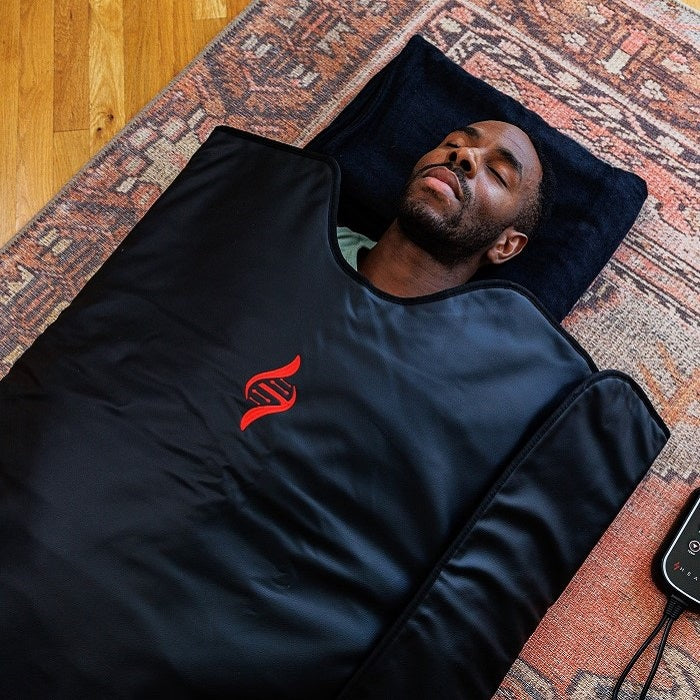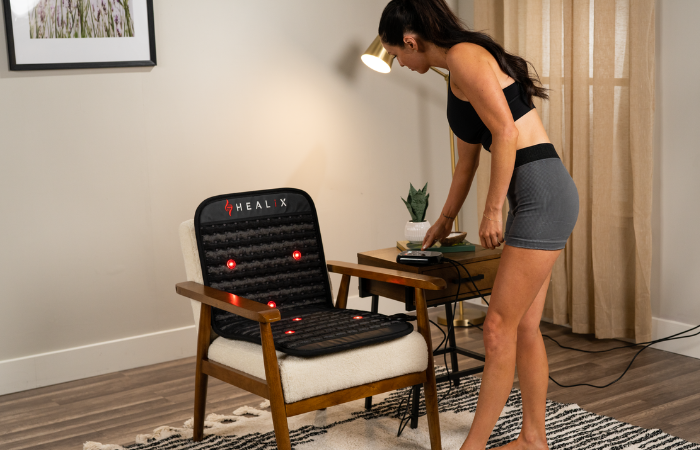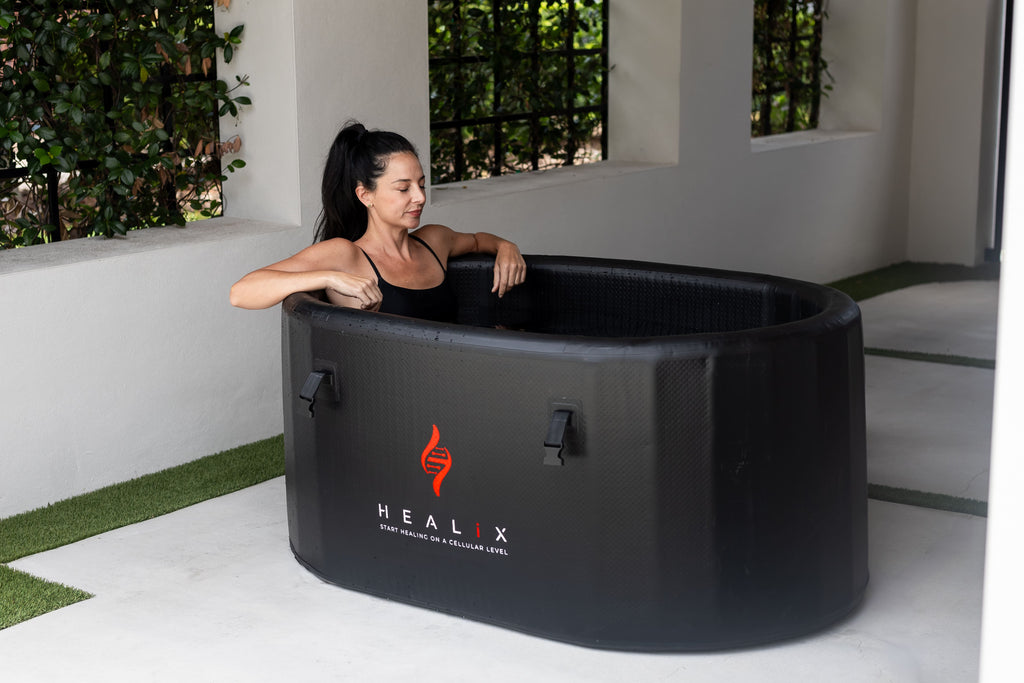Is Infrared Therapy Safe? What Science Says
Is Infrared Therapy Safe? What Science Says

September 3rd, 2025 | Infrared Tech
Infrared therapy has emerged as a revolutionary approach to recovery and wellness, offering benefits like reduced muscle soreness, improved circulation, and stress relief. However, concerns about infrared therapy safety often arise among those considering its use. This article dives into the scientific evidence surrounding infrared therapy safety, addressing potential risks while highlighting its therapeutic advantages.
For more insights into complementary practices, check out our blog on Heat Therapy: Natural Remedies for Stress and Anxiety , which explores how warmth can calm the nervous system and promote relaxation.

Scientific Validation of Infrared Therapy Safety
To answer the question, "Is infrared therapy safe?" we must turn to scientific research. Multiple studies have examined the effects of infrared therapy on the human body, with overwhelmingly positive findings regarding its safety profile. For instance:
1. A study published in Breast Cancer Research investigated the use of infrared laser moxibustion to alleviate cancer-related fatigue in breast cancer survivors. The researchers found that participants experienced significant reductions in fatigue without reporting adverse effects from the treatment¹. These results underscore the safety of infrared therapy even in vulnerable populations.
2. Another comprehensive review in Journal of Photochemistry and Photobiology explored the biological effects and medical applications of infrared radiation. The authors concluded that infrared therapy is generally safe and offers numerous therapeutic benefits, including improved circulation, reduced inflammation, and enhanced tissue repair². Importantly, the study emphasized the non-invasive nature of infrared therapy, making it a low-risk option for promoting healing and wellness.
3. Additionally, research published in Mitochondrion demonstrated that near-infrared light therapy stimulates mitochondrial activity, promoting cellular repair without causing harm to surrounding tissues³. These findings further reinforce the safety of infrared therapy while underscoring its potential to support recovery at a cellular level.
Potential Risks of Overuse or Misuse
Although infrared therapy safety is well-documented, excessive or improper use can lead to minor complications. Let’s examine some common concerns:
1. Dehydration:
One of the mechanisms of infrared therapy involves inducing sweat to promote detoxification and relaxation. While sweating is beneficial, prolonged exposure to infrared heat may increase fluid loss, potentially leading to dehydration. To mitigate this risk, users should prioritize hydration before, during, and after each session. Drinking water ensures that your body remains adequately hydrated, allowing you to enjoy the full benefits of infrared therapy safely.
In addition to water, it’s important to replenish electrolytes, as they play a critical role in maintaining proper hydration and overall bodily function. Electrolytes, such as sodium, potassium, magnesium, and calcium, help regulate fluid balance, nerve function, and muscle contractions. When you sweat, these essential minerals are also lost, which can impair your body’s ability to absorb and retain water effectively. Consuming electrolyte-rich drinks or foods—such as coconut water, bananas, or electrolyte supplements—can help restore balance and ensure optimal hydration, especially after extended infrared therapy sessions. By combining adequate water intake with electrolyte replenishment, you can support your body’s recovery process and maximize the therapeutic benefits of infrared heat.
2. Skin Sensitivity:
Some individuals with sensitive skin may experience mild irritation or discomfort during their first few sessions. Adjusting the temperature settings on infrared therapy devices can help alleviate these issues. By starting with shorter, cooler sessions and gradually increasing intensity, users can acclimate their skin to the warmth of infrared therapy without adverse reactions.
3. Medical Conditions:
People with certain health conditions, such as cardiovascular disease, low blood pressure, or pregnancy, should consult a healthcare professional before using infrared therapy. While the therapy itself poses minimal risk, individual circumstances may warrant caution.
If you’re interested in learning how mindfulness practices can enhance the benefits of heat therapy, check out our blog on Recovery, Mitochondria, and Red Light Therapy: A Deep Dive into Cellular Health and Healing. This article explores the powerful connection between meditation and infrared therapy, highlighting how their combined effects promote relaxation, support cellular health, and contribute to overall wellness.
Therapeutic Benefits Outweigh Risks
Despite concerns about infrared therapy safety, the overwhelming consensus among researchers is that its therapeutic benefits far outweigh any associated risks. Studies consistently demonstrate the following advantages:
1. Reduced Muscle Soreness:
Infrared therapy boosts blood flow, delivering oxygen and nutrients to repair damaged tissues while removing lactic acid and other toxins. This process significantly reduces delayed onset muscle soreness (DOMS), making it an invaluable tool for athletes and fitness enthusiasts alike².
2. Improved Circulation:
Enhanced circulation not only accelerates recovery but also prepares the body for future physical activity. Whether you’re training for a marathon or simply staying active, improved blood flow ensures your muscles perform optimally³.
3. Stress Reduction:
The calming effects of infrared heat promote relaxation and mental clarity, helping combat stress and anxiety. Pairing infrared therapy with mindfulness practices, such as meditation, amplifies these benefits.
These scientifically supported benefits illustrate why infrared therapy safety remains a top priority—it allows users to harness the power of infrared heat confidently and effectively.
Addressing Common Concerns About Infrared Therapy Safety
Let’s tackle some frequently asked questions about infrared therapy safety:
1. Can Infrared Therapy Cause Burns?
No, infrared therapy operates at lower temperatures than traditional saunas, significantly reducing the risk of burns. Most infrared devices distribute heat evenly and include built-in safeguards to prevent overheating.
2. Is It Safe for Long-Term Use?
Yes, long-term use is safe when practiced responsibly. Research shows that consistent infrared therapy sessions provide cumulative benefits without negative side effects, provided users adhere to guidelines and avoid overexposure².
3. Are There Any Side Effects?
Mild side effects, such as temporary dizziness or fatigue, are rare but possible. Staying hydrated and limiting session durations can minimize these issues, ensuring a safe and enjoyable experience.
For a deeper dive into the science-backed benefits of infrared therapy, explore our blog on Harnessing the Power of Far Infrared Therapy for Detoxification and Wellness. This article highlights how far infrared therapy supports detoxification and enhances overall well-being.
Final Thoughts: Embrace Safe Recovery
The verdict is clear: infrared therapy safety is well-established in scientific literature. With proper precautions, infrared therapy offers a safe, effective, and innovative solution for improving recovery and overall health.
Whether you’re recovering from a tough workout, managing chronic pain, or simply looking to unwind, infrared therapy provides a promising path forward. By prioritizing hydration, moderation, and adherence to usage guidelines, you can unlock the full potential of infrared therapy while ensuring your safety every step of the way.
References
1. Mao, H., Jin, M., Xie, L., Mao, N., Shen, X., Chen, J., Chen, X., Mao, J., & Shen, X. Infrared laser moxibustion for cancer-related fatigue in breast cancer survivors: a randomized controlled trial. Breast Cancer Research : BCR. 2024; 26. https://doi.org/10.1186/s13058-024-01838-1.
2. Tsai, S., & Hamblin, M. Biological effects and medical applications of infrared radiation. Journal of Photochemistry and Photobiology. B, Biology. 2017; 170. https://doi.org/10.1016/j.jphotobiol.2017.04.014.
3. Eells, J., Wong-Riley, M., Verhoeve, J., Henry, M., Buchman, E., Kane, M., Gould, L., Das, R., Jett, M., Hodgson, B., Margolis, D., & Whelan, H. Mitochondrial signal transduction in accelerated wound and retinal healing by near-infrared light therapy. Mitochondrion. 2004; 4 5-6. https://doi.org/10.1016/J.MITO.2004.07.033.



